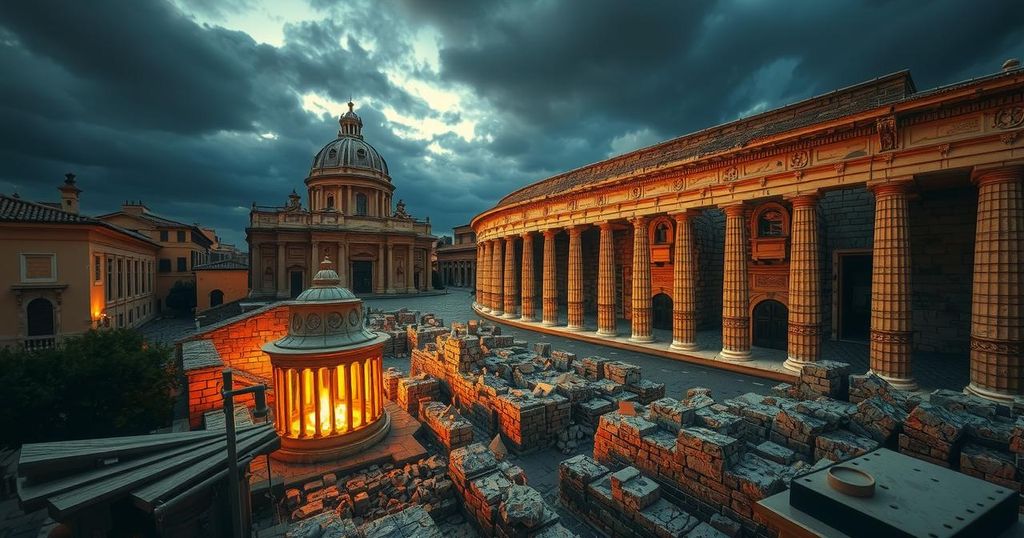Earthquakes Likely Contributed to the Death Toll in Pompeii’s Eruption Disaster
The new study proposes that earthquakes could have worsened the death toll in Pompeii during the A.D. 79 eruption of Mount Vesuvius. Evidence from skeletal remains suggests that some individuals who sought shelter from ash and gas perished when their buildings collapsed during subsequent tremors. Historical accounts further substantiate the occurrence of seismic events, indicating the perilous choices confronted by Pompeiians amid the catastrophic eruption.
In ancient Pompeii, a catastrophic eruption of Mount Vesuvius in A.D. 79 resulted in the rapid deaths of many due to ash, gas, and falling debris. Recent studies indicate that earthquakes may have significantly contributed to the devastating toll. Researchers examined skeletal remains found in a ruin, revealing multiple fractures suggesting these individuals sought refuge from the initial volcanic fallout. However, subsequent tremors caused building collapses that proved fatal. Historical accounts from Pliny the Younger corroborate the occurrence of seismic activity, emphasizing the perilous choices faced by the inhabitants: to seek safety indoors or brave the eruptive hazards outside. This new evidence enhances our understanding of the chaos that ensued during this catastrophic event.
The eruption of Mount Vesuvius is one of history’s most notorious volcanic events. Ancient Roman accounts detail the tragic impact on the coastal cities of Pompeii and Herculaneum, leading to thousands of fatalities. Traditionally, it was believed that inhalation of ash and exposure to volcanic materials caused the majority of casualties. However, recent research has prompted a reevaluation of the role of earthquakes in this disaster, suggesting that seismic activity may have exacerbated the already dire situation for the residents of Pompeii.
The investigation into Pompeii’s disaster reveals that earthquakes, alongside volcanic eruption, played a critical role in increasing casualties during this historic tragedy. This understanding reshapes perceptions of the event, indicating that the residents were not solely victims of volcanic material but also faced the additional threat of seismic instability. The findings underscore the complexity of ancient disasters, highlighting the multifaceted dangers that compounded the catastrophic consequences experienced by the city’s inhabitants.
Original Source: www.snexplores.org




Post Comment